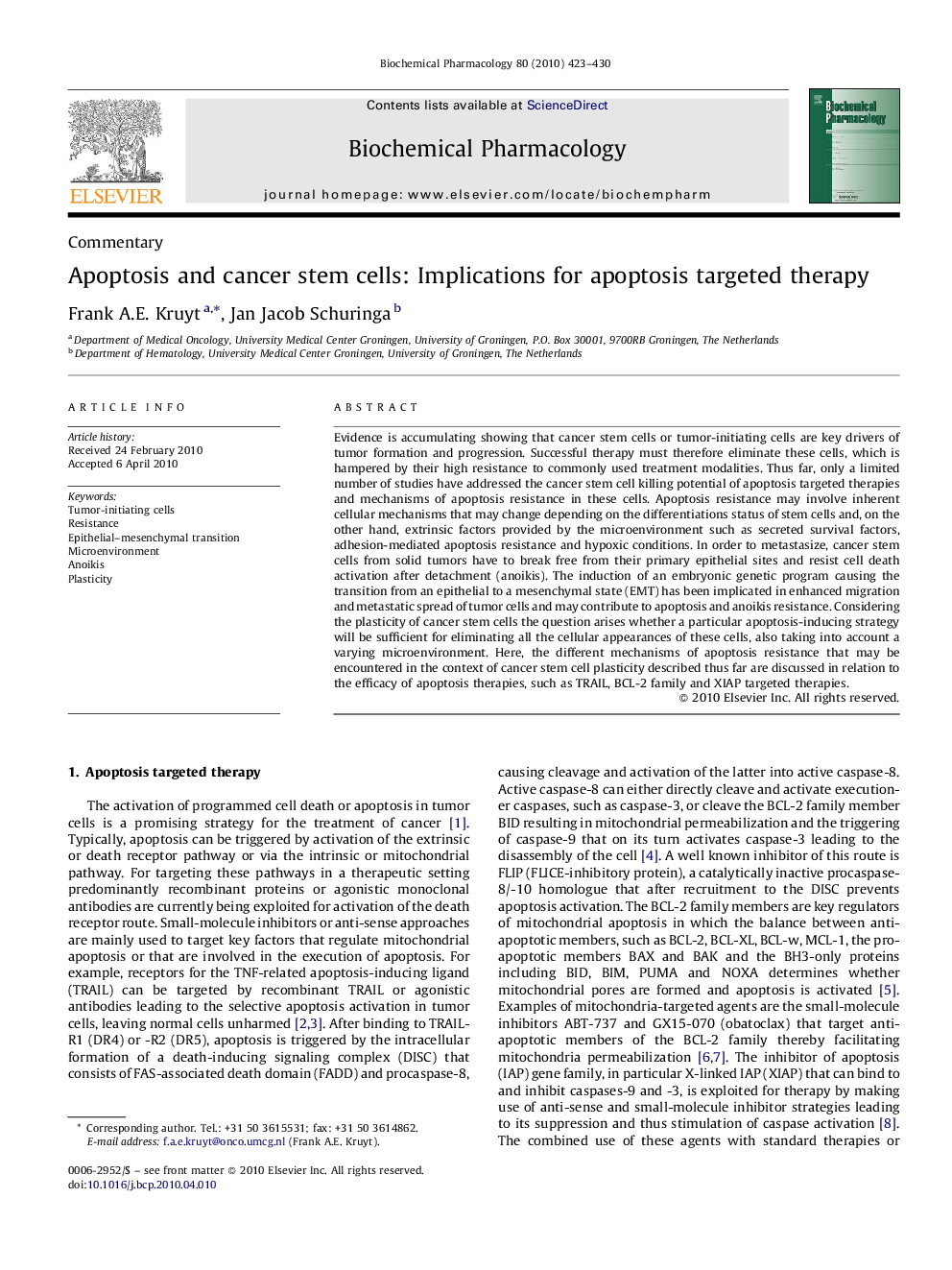| Article ID | Journal | Published Year | Pages | File Type |
|---|---|---|---|---|
| 2513387 | Biochemical Pharmacology | 2010 | 8 Pages |
Evidence is accumulating showing that cancer stem cells or tumor-initiating cells are key drivers of tumor formation and progression. Successful therapy must therefore eliminate these cells, which is hampered by their high resistance to commonly used treatment modalities. Thus far, only a limited number of studies have addressed the cancer stem cell killing potential of apoptosis targeted therapies and mechanisms of apoptosis resistance in these cells. Apoptosis resistance may involve inherent cellular mechanisms that may change depending on the differentiations status of stem cells and, on the other hand, extrinsic factors provided by the microenvironment such as secreted survival factors, adhesion-mediated apoptosis resistance and hypoxic conditions. In order to metastasize, cancer stem cells from solid tumors have to break free from their primary epithelial sites and resist cell death activation after detachment (anoikis). The induction of an embryonic genetic program causing the transition from an epithelial to a mesenchymal state (EMT) has been implicated in enhanced migration and metastatic spread of tumor cells and may contribute to apoptosis and anoikis resistance. Considering the plasticity of cancer stem cells the question arises whether a particular apoptosis-inducing strategy will be sufficient for eliminating all the cellular appearances of these cells, also taking into account a varying microenvironment. Here, the different mechanisms of apoptosis resistance that may be encountered in the context of cancer stem cell plasticity described thus far are discussed in relation to the efficacy of apoptosis therapies, such as TRAIL, BCL-2 family and XIAP targeted therapies.
Graphical abstractFigure optionsDownload full-size imageDownload as PowerPoint slide
